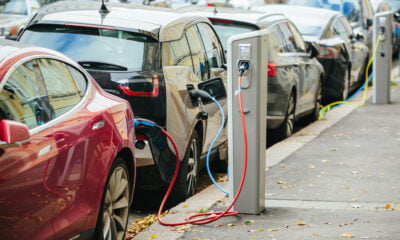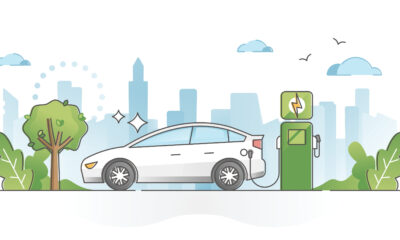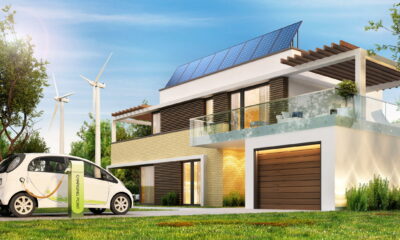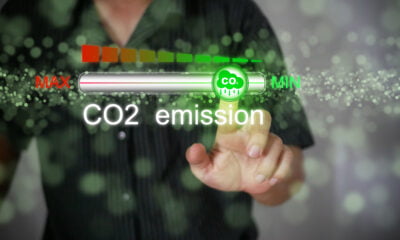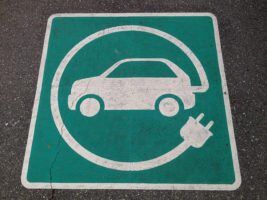

Features
A Guide to Alternative Fuel Cars
These days there are, thankfully, no shortage of attempts to create alternatives the somewhat environmentally dated fuels and engines we use in our cars every day. However this ever growing list of potentially game changing technology can prove to be a little confusing for many people, not least because some of them may never prove to be feasible in the long term.
As with all new technology the chance of failure is high and the reasons are not always because the idea was not a good one. Failure can come down to cost, image, public information or just plain old poor marketing. In most cases however there are good and bad points about most alternative fuel types and information is very much the key. Below are some simple explanations about some of the main alternative ways car manufacturers and people are using to power cars. There is somewhat of an elephant in the room with most of these options but that can wait until later.
Biodiesel and Bioethanol
Before we jump into the world of electric powered cars it is important to look at alternative methods of powering existing engine types. This line of exploration often means anyone can convert their car into a more economical and potentially less environmentally damaging vehicle for considerably less than buying a new car.
Bioethanol is a fuel made from fermenting plant matter including sugar cane and cereals like wheat and barley. The basic idea is that enzymes are used to create sugars from the original biomass and then yeast is used to ferment the pulp to produce ethanol. This ethanol goes through further distillation to produce the end product. The ethanol can be handled in much the same way petrol can because it is also liquid at room temperature. If used alongside normal fuel in a mixture bioethanol requires no modification to the car. However, to run a high percentage of this fuel the engine timing does need to be altered.
Biodiesel
Biodiesel is produced through a process called esterification. It can come from crops like oil seed rape or from waste vegetable oil and even animal products. The refining process involves filtering the oil initially then mixing it with an alcohol like methanol along with a catalyst. After further filtering the end result can once again be used in different percentages depending on the application. Biodiesel is mixed with traditional diesel to run a normal diesel engine, low percentages can mean very little difference to the running of the car but higher amounts can cause some issues. Some of the problems include damage to rubber tubing and gaskets in the engine and clogged fuel filters.
The environmental hope with these fuels is that they can be carbon neutral. This is because plant material pulls carbon out of the atmosphere at the same time it is being produced during the combustion of the end product. The problem with this system is that there are added carbon costs to growing the plant matter including the production of fertilisers and the use of machinery. Overall though a move to biofuels could considerably reduce the overall production of CO2 so certainly makes a step in the right direction and carries minimal cost to the user.
Liquid Petroleum Gas
Another more traditional option in term of fuel alternatives for cars is Liquid Petroleum Gas or LPG. This is essentially propane and butane compressed to such a high pressure they liquefy. Anyone that remembers their GCSE chemistry lessons will now that applying pressure to gases can turn them into a liquid in a similar way to lowering the temperature. It is because of this high pressure LPG carries some negative points. To convert a car to use LPG you have to have a high pressure tank installed which can be bulky and costly. The refuelling process is also a little more complex and not without its potential dangers. Environmentally LPG cars are considered more efficient and so produce less greenhouse gases per mile but they are also considered cleaner in terms of other pollutants too. There is no doubt LPG is cheaper at the pumps so that extra money for the conversion could be easily recouped. At the moment it is really only standard petrol engines that can be converted to run on LPG but work towards a diesel option is being carried out.
Hydrogen
So now we are moving into what are considered truly alternative fuel and power options. The use of hydrogen as a fuel is certainly one that has a major advantage over any other and that is the fact that the only thing a hydrogen car puts into the atmosphere is water. The most common misconception about hydrogen cars is that they are not actually powered by the hydrogen itself, well not in the same way as a petrol car is powered by petrol anyway. The hydrogen is used to react with oxygen from the air in a fuel cell. This fuel cell then creates electricity that can be used to drive electric motors. It is these motors that power the car not the direct combustion of hydrogen.
In terms of environmental impact hydrogen certainly looks good initially but it is worth keeping in mind that it take a lot of energy to produce hydrogen and that power ultimately comes from power stations. So whilst hydrogen makes for a very clean car the process to create it can often offset any gains. This may well change as power generation moves to more sustainable options like wind and solar so hydrogen cars are still a very viable option. Another more scary aspect of hydrogen, however, is that it is highly explosive. This means fuel tanks have to be made even tougher than petrol tanks and the delivery systems at fuel stations also carry a great deal of cost and planning.
Hybrids
The hybrid is probably the most well-known of all the alternatives to a standard fuel engine. Models like the Toyota Prius and the Honda Insight are globally known and have now been around for some years. While there are a number of different options in terms of a hybrid system the basic premise is the same; a petrol or diesel engine paired up with an electric power unit or units with a battery. The idea is that by using batteries and electrical power you can maximise the energy gained from burning the fuel and so increase efficiency and reduce carbon output.
There are really only 2 main types of hybrid and these are the series and parallel configurations.
Parallel Hybrid
The parallel option is the most commonly used and is the one found in the aforementioned Prius, among others. This set up means the wheels can be driven by both the standard combustion engine and the electric motors depending on the demand placed on the system and speeds needed.
Series Hybrid
In a series hybrid the combustion engine simply acts as a generator to produce power for the electric motors that power the wheels. This means the engine has no direct contact with the wheels and as such can be of varying sizes depending on the manufactures needs. Mild hybrids of this nature only have a small engine that simply acts as a range extender for the electric motor. Strong hybrids have a larger engine that can continually provide power to the electric motors on long journeys when the initial charge is completely gone.
The hybrid is already a very successful alternative option for car owners and does do what it is meant to do in terms of reducing carbon production. The electric motors tend to be used at low speeds where the charge held is enough to power the vehicle and this means they create very little pollution when driving through towns. It is only when the speeds increase does the extra power of the engine come into play and this is largely the same for both types. As for as a tried a tested option the hybrid is certainly a strong contender but it still uses traditional fossil fuels and for some people this is simply not a big enough step towards a true alternative.
Electric Vehicles
Often referred to simply as EVs, electric vehicles are often considered the ultimate step in terms of alternative power sources for cars. As with hybrids there are a number of configurations from a single electric motor powering the entire car to motors on each wheel. The principle of the EV is a very simple one, the car and everything about it is powered by an electric motor or motors and the charge is kept in an on board battery. There is no refuelling as such with an EV the owner simply plugs the car in at home or work using a dedicated car port or charges the car at one of the growing number of public points. One of the main issues with EVs is the range. Range is the term used to describe the distance a car can go on one charge. It is this distance that is often cited as the limiting factor with EVs because once you run out of “juice” you are stuck and most cars are only able to cover a range of around 100-200 miles before running out. Compared to a traditional car which could do 4 times that this limitation often proves too much of a barrier for many people.
The principle of the EV may be universal across all models but the delivery is certainly not. The Nissan leaf is a great example of a small, light and relatively cheap EV, it exemplifies the traditional impression what an EV should be. Conversely Tesla produce large, powerful, heavy and luxurious car that are powered by the same principles. As a brand Tesla are taking the idea of the EV much further and creating an offering that appeals to people who do more than just a few miles a week. However, Teslas cost a lot of money and as such still sit very much in the luxury car market.
Plug in Hybrid PHEV
The final option that is currently on the table in terms of alternative fuel types is not really a new one but a combination of 3 different choices. The Plug-in Hybrid Electric Vehicle (PHEV) combines the hybrid configuration of an electric motor and traditional fuel engine but adds in the option of charging the batteries from a port too. The PHEV really does offer the best of both worlds because it can run on just electric power and can be charged from home, work or public charge points but it doesn’t suffer any range issues because as the charge dwindles the engine kicks in to either drive the electric motor directly, or the wheels as well as charging the battery. Models like the Mitsubishi Outlander PHEV even harvests power during braking to make sure it uses every last bit of potential energy. The PHEV option is certainly one that is more complex and as a result could be costly when it comes to repairs but it is also the best option for people looking to reduce their carbon footprint without changing their lifestyle. Some cars offer figures of around 100 MPG and can run on EV mode in towns to reduce local pollution.
Infrastructure – The Elephant in the Room
As mentioned there is one huge issue with most alternative fuel and power options and that is infrastructure. The fact is, that no matter what new type of fuel or power you consider, you will always face the problem of delivery. Finding a garage with a biofuel option is almost impossible, as is finding one with hydrogen at the pump. There are a number of places you can get LPG but they are still few and far between. The issue is almost worse when it comes to EVs because of the range issue. If your LPG car will do 400 miles on a tank, for example, the odds of you getting to a LPG pump are not too bad but if you range was just 100 miles or less as is the case with an EV you could find yourself high and dry very easily. There is, in fact, a type of stress called range anxiety which has come about solely from the use of EVs. The only options that really do not suffer from the lack of charge points or fuel pumps are one involving a hybrid system. By using traditional fuel when the electric power is not available they are essentially immune to the problems facing the other options. As such the hybrids and PHEVs certainly make for the better option while governments and fuel companies catch up with demand and decide which option is going to take humanity forward. They may not be around in 50 or 100 years but they are certainly doing well now.
Written by Ade Holder, an independent motoring journalist working with AA Garage Guide.







